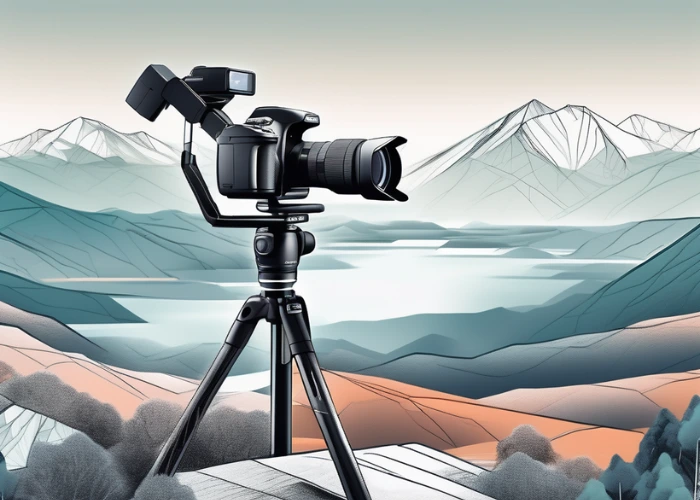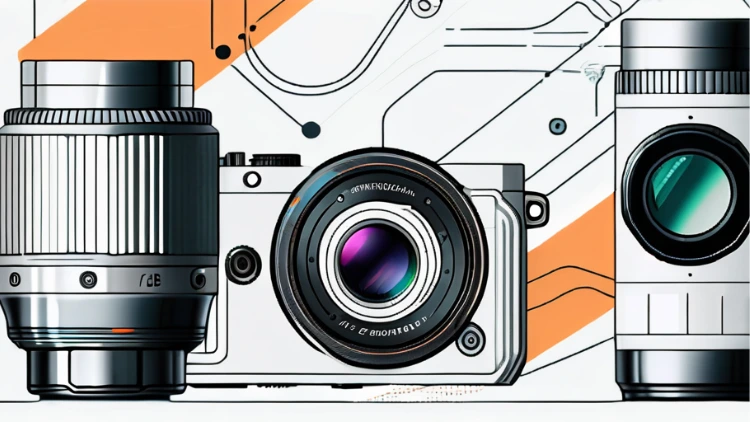Photography Masterclass: A Complete Guide to Photography
If you are an aspiring photographer, then you need a professional who teaches you about how to be a ninja photographer. Taking photography and videography classes can offer numerous benefits to kickstart your journey effectively and professionally.
Photography & Video Classes typically follow a curriculum that covers essential skills progressively, from understanding camera functions to composition and editing techniques. This structure provides a clear learning path and ensures you don't miss crucial fundamentals.
With guidance and a solid understanding, it not only boosts your confidence, you're also encouraged to experiment and explore different styles and more advanced techniques, helping you discover your unique photographic voice.

Learn from the Best
How Do Cameras Work?
Before delving into the art of photography, it is essential to understand how cameras work. Cameras capture light through a lens and create an image by exposing a photosensitive surface to that light. This surface can be a traditional film or a digital sensor. The camera's intricate mechanism allows you to control exposure, focus, and various settings to achieve the desired result.
But have you ever wondered what happens inside a camera once you press the shutter button? Let's take a closer look at the fascinating process that unfolds behind the scenes.
When you press the shutter button, a series of events is set into motion. First, the camera's mirror flips up, allowing light to pass through the lens and reach the photosensitive surface. This surface, whether it's a film or a digital sensor, is incredibly sensitive to light. It captures the incoming light and converts it into an electrical signal.
But how does the camera know how much light to let in? This is where the aperture comes into play. The aperture is an adjustable opening within the lens that controls the amount of light entering the camera. By adjusting the aperture, you can determine how much light reaches the photosensitive surface, thus affecting the overall exposure of your image.
Once the light has been converted into an electrical signal, it is then processed by the camera's image sensor or film. In the case of a digital camera, the electrical signal is converted into digital data, which is then stored on a memory card. This data contains all the information needed to recreate the image, including color, contrast, and detail.
Understanding the technical aspects of cameras will enable you to make informed decisions while shooting and unleash your creative potential. By mastering exposure, focus, shutter speed and other settings, you can take full control of your photography and capture stunning images that truly reflect your vision.

Finding a Camera for Digital Photography
When starting your journey in digital photography classes, finding the best camera can be overwhelming with the multitude of options available. Several factors come into play when choosing a camera, such as budget, purpose, and desired features.
Researching the market and reading reviews can help you narrow down your choices. Consider factors like sensor size, megapixels, ISO range, autofocus capabilities, and connectivity options to find a camera that suits your needs. Remember, the camera is merely a tool, and it's your artistic vision that truly matters.
DSLR vs Mirrorless
Two popular types of digital cameras are DSLRs (Digital Single-Lens Reflex) and mirrorless cameras. DSLRs offer a traditional design with an optical viewfinder and interchangeable lenses, while mirrorless cameras are more compact and use electronic viewfinders. Both have their advantages and disadvantages, so make sure to research and compare before making a decision.
What Sensor Size Do You Need?
Let's delve deeper into some of the key factors to consider when choosing a camera for digital photography. One important aspect is the sensor size. The sensor is the heart of the camera, capturing the light that forms the image. Larger sensors tend to produce better image quality, especially in low-light conditions, as they can capture more light. However, smaller sensors can still deliver impressive results, especially if you primarily shoot in well-lit environments.
Other Types of Cameras
Apart from DSLRs and mirrorless cameras, there are other options to explore. Compact cameras are small, portable, and great for casual photography. Bridge cameras offer a longer zoom range and more manual control. Consider your intended use and budget when exploring these alternatives.
Crop Factor
Crop factor refers to how much smaller the sensor is compared to a full-frame sensor. It affects the effective focal length of lenses. Understanding crop factor will help you choose lenses that suit your shooting style and focal length preferences.
Which Is the Best Camera Brand?
Choosing the right camera sets the foundation for your photographic journey. But with so many options available, the decision can feel overwhelming. Consider your budget, shooting preferences, and long-term goals.
If you're drawn to interchangeable lenses and manual controls, investing in a DSLR camera might be the perfect fit. To delve deeper into the intricacies of DSLRs and unlock their full potential, consider enrolling in a dedicated DSLR photography course. Remember, the right camera empowers you to capture your vision. Take your time, do your research, and don't hesitate to explore resources like a DSLR photography course to guide you on your photographic adventure.

Understanding Your Camera
Once you have chosen your camera, it's crucial to get acquainted with its features and controls. Familiarizing yourself with the camera's buttons, dials, and menus will allow you to make quick adjustments while shooting, without missing precious moments.
Read the camera's manual thoroughly and experiment with different settings to understand how they impact your images. Take the time to learn about shooting modes, metering modes, white balance, and other essential functions of your camera.
By understanding your camera inside out, you will be able to capture images with greater precision and confidence.
Why Are Megapixels Important?
Megapixels, often a hot topic of debate, refer to the resolution of the camera. While higher megapixels can result in more detailed images, it's essential to remember that megapixels alone don't determine image quality. Other factors, such as lens quality and image processing capabilities, also play a significant role. So, don't get too caught up in the megapixel race and consider the overall camera performance.
Metering Modes
Metering modes determine how the camera measures and evaluates light to determine exposure. Common metering modes include evaluative metering, center-weighted metering, and spot metering. Understanding and utilizing different metering modes will help you achieve accurate exposure in various lighting conditions.
Histograms
Histograms provide a graphical representation of the tonal distribution in your image. They show the distribution of shadows, mid-tones, and highlights. Utilizing histograms can help you achieve proper exposure and avoid overexposed or underexposed areas in your photographs.
Shooting Modes
Cameras offer various shooting modes, including manual, aperture priority, shutter priority, and program modes. Each mode provides a different level of control over exposure settings. Experimenting with different shooting modes will allow you to explore and understand the impact of each setting on your images.
Depth of Field
Depth of field refers to the area in your image that appears in focus. It is influenced by aperture, focal length, and subject distance. Understanding how to control depth of field will enable you to create images with a shallow or extended focus, depending on your creative vision.
White Balance
Now, let's talk about white balance. White balance is a crucial setting that determines the color temperature of your images. Different lighting conditions, such as daylight, fluorescent, or incandescent, can cast different color tones on your photos.
By adjusting the white balance setting, you can ensure that the colors in your images appear natural and accurate. Experiment with different white balance presets or even set a custom white balance to achieve the desired color temperature.
By delving into the intricacies of your camera's features and controls, you will unlock a world of creative possibilities. So, grab your camera, start experimenting, enrol in a digital photography course online and embark on an exciting journey to capture stunning images!

Understanding Your Lens
In photography, lenses play a vital role in shaping the composition and visual impact of your images. Understanding different lens characteristics and knowing which lens to use in specific situations will greatly enhance your photography skills.
Focal Length
Focal length determines the angle of view and magnification of your lens. It can be classified into three categories: wide-angle, standard/normal, and telephoto. Wide-angle lenses capture a broader scene, while telephoto lenses bring distant subjects closer. Understanding focal length will help you choose the right lens for different genres of photography.
Prime vs Zoom Lenses
Prime lenses have a fixed focal length, while zoom lenses offer a range of focal lengths. Prime lenses are known for their sharpness and wide apertures, making them great for low-light situations and achieving a shallow depth of field. Zoom lenses provide versatility and convenience in framing your subjects.
The Nifty Fifty
The "nifty fifty" refers to a 50mm prime lens, which is often recommended as a must-have lens for beginners. It offers a natural field of view similar to the human eye and is versatile for various genres of photography, including portraits, street photography, and everyday snapshots.
What Lens Is Best for Beginners?
As a beginner, it's important to choose a lens that suits your interests and budget. A versatile zoom lens with a focal length range of 18-55mm is a good starting point. It allows you to explore different genres of photography and learn the basics without breaking the bank.
Lens Filters
Lens filters are accessories that attach to the front of your lens to modify or enhance your images. They can be used for various purposes, such as reducing glare, enhancing colors, or adding creative effects. Popular lens filters include UV filters, polarizing filters, and neutral density filters.
Through photography and videography classes, you will better understand the characteristics and capabilities of different lenses and this will help you make informed decisions when choosing the right lens for your photography needs. Experiment with different lenses to explore their unique qualities and discover your preferred shooting style.
Composition and Taking Sharp Photographs
Composition is the art of arranging elements within the frame to create visually pleasing and engaging photographs. Understanding composition rules, such as the rule of thirds, visual weight, triangles, eye lines, and balance, will help you compose impactful images.
Take Sharp Images Like a Pro Photographer
Additionally, ensuring your images are sharp is crucial for capturing details and maintaining image quality. Here are some tips to help you capture sharp photographs:
- Use a tripod or stabilize your camera to avoid camera shake.
- Use a faster shutter speed to freeze motion.
- Focus accurately on your subject, utilizing autofocus or manual focus.
- Pay attention to your aperture settings to control the depth of field.
- Be mindful of lighting conditions and adjust your ISO accordingly.
- Review your images at 100% zoom to ensure sharpness.
Experiment with different angles, vantage points, and perspectives to add depth and interest to your compositions. Remember, photography is a form of visual storytelling, and composition is the language you use to convey your message.
Conclusion: Photography for Beginners
Photography is an exciting and rewarding art form that allows you to capture and share your unique perspective with the world. Through photography and videography classes, you can explore the fundamental aspects of photography, including how cameras work, finding the right equipment, understanding your gear, and the art of composition.
Continued practice, experimentation, and learning from professionals are the keys to mastering photography. Embrace your creativity, embrace the evolving technology, and embark on a fulfilling journey to become a skilled photographer in 2024.
FAQs
Is Masterclass good for photography?
If you're considering enhancing your photography skills, Masterclass can be an excellent platform to learn from some of the world's leading photographers. Masterclass offers comprehensive courses, such as photography and videography classes, digital photography classes, commercial photography courses which are taught by renowned professionals who share their knowledge, techniques, and insights.
Whether you want to learn the basics, dive into specific genres, or explore post-processing techniques, Masterclass provides a diverse range of photography courses to suit different interests and skill levels.
How many years does it take to master photography?
Mastery in photography is an ongoing journey that varies from person to person. While some photographers may achieve a level of mastery in a shorter time, others may take years or even a lifetime to continually refine their craft.
However, with dedication, practice, and a thirst for learning, you can make significant progress in a relatively short time. Remember that mastery is not solely determined by the number of years but by the quality of your work and the growth of your artistic vision.
Which course is best in photography?
The best digital photography courses depend on your specific goals and interests. Each course offers unique insights and techniques, making it important to choose one that aligns with your aspirations.
Research various courses and consider factors such as the instructor's expertise, curriculum, learning format, reviews, and cost. Look for courses that cover the foundational aspects of photography while also providing opportunities for creative exploration and hands-on practice.
Ultimately, the best digital photography course online is one that challenges and inspires you, allowing you to develop your skills and artistic vision.
How do I choose a photography career?
Choosing a photography career requires careful consideration and self-reflection. Start by defining your interests and passions within photography. Research different photography fields, check out photography and videography classes, portrait photography courses, or a wedding photography course online. Determine whether you enjoy capturing portraits, landscapes, events, or other genres.
Consider your long-term goals, whether you aspire to work as a freelance photographer, open your own studio, or even pursue a career in photojournalism or fashion photography.
Furthermore, research different career paths and the skills required for success. Network with professionals in the industry and seek mentorship or internships to gain practical experience and insight into the field.
Ultimately, choosing a photography career involves combining your passion, skills, and market demand to create a fulfilling and prosperous professional journey.
Enrol now in photography and videography classes to kickstart your journey towards becoming a skilled photographer. With dedication, practice, and continuous learning, you can develop your artistic vision, technical skills, and create captivating images that resonate with viewers. Embrace the endless possibilities of photography in 2024 and beyond.


After reading the blog, I've l...





















